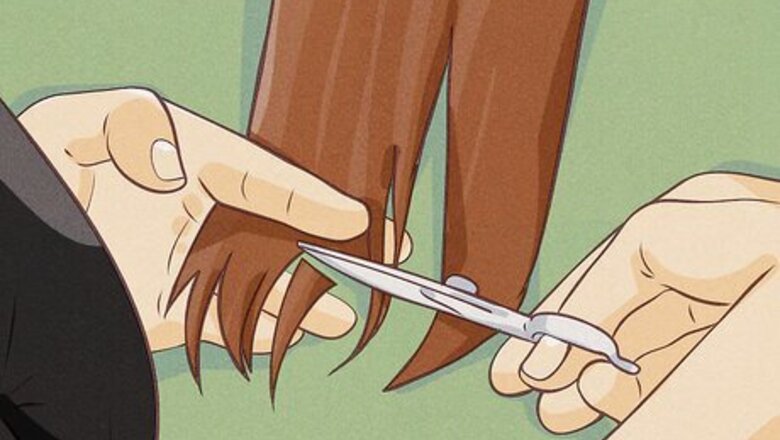
views
Schedule regular trims.
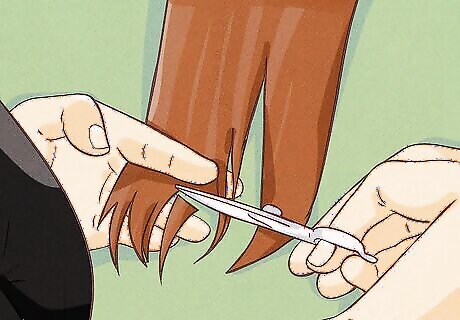
While cutting your hair often will not cause it to grow faster, trimming your hair regularly will help to maintain its length. Trim your hair every 6 to 8 weeks to rid your locks of damaged ends and to prevent split ends from re-splitting. When you maintain this hair trimming schedule, it will only be necessary to cut approximately ½ an inch off your tresses each time.
Shampoo less.
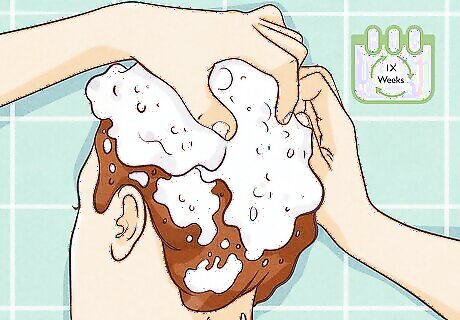
Shampooing your hair strips the scalp of its natural, nourishing oils. These oils ensure the health of your long locks. If you choose to use shampoo, apply the product 2 to 3 times per week and always condition your hair after. If you wish to avoid shampoo, replace the product with cleansing conditioner. Always apply shampoo directly to the scalp and conditioner to the ends of your hair. If you want to refresh your hair and remove the excess of oil on the days you are not washing it, use a dry shampoo.
Dry your hair with care.
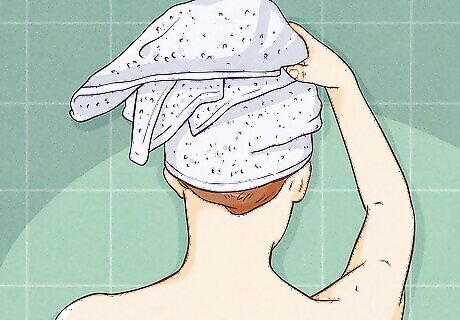
After showering, squeeze the excess water from your locks with a towel. Don't brush wet hair. Instead, use a wide tooth comb to detangle your long locks. When possible, leave the blow-dryer in the drawer and air dry your tresses. Avoid roughly rubbing your hair with a towel—this leads to frizz and split ends. Use microfiber towels to dry your hair, which are less harsh and damaging than regular towels.
Avoid tight hairstyles.
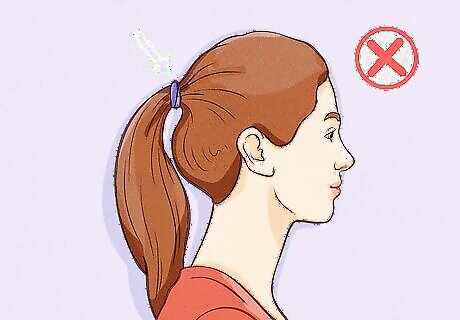
While ponytails, braids, and top-knots are adorable and stylish, the tension these hairdos place on your hair can cause damage. The optimal style for long locks is to wear your hair down. If you prefer to pull it up and back, opt for a low chignon or ponytail, and don't wrap the hair too tightly.
Reduce your hair's exposure to friction.
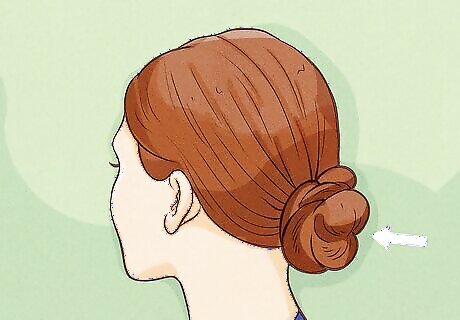
When your hair rubs against certain fabrics, the resulting friction causes split ends. Pull your hair up into a low bun or sweep it to the side when you wear fur, faux fur, or wool.
Choose nourishing products formulated for your hair type.
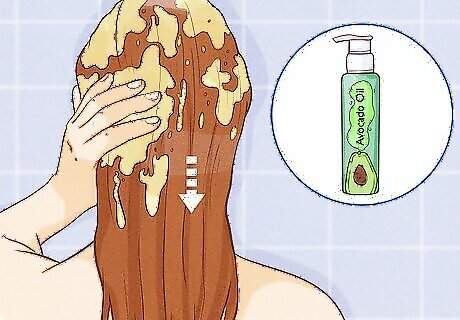
When selecting products, read the label and ingredients list carefully. Always buy products that are formulated for your specific hair type. Avoid products that contain sodium lauryl sulfate, sodium laureth sulfate, and isopropyl alcohol. Instead, seek out products that contain natural items, like avocado oil, honey, and or coconut milk. Don't haphazardly test new products on your hair. If you are not sure what products to choose, talk with your hair stylist. They will assess your hair's needs.
Limit your use of hair dyes and hair products.
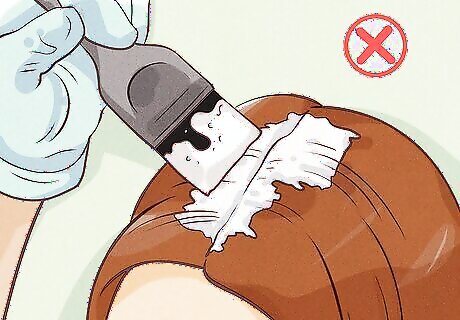
Hair dyes will damage your hair and overusing products will weigh it down. It is best to simply avoid dying your hair—wear your natural color proudly. If you choose to dye your locks, only dye your hair when it absolutely needs it. Use a marginal amount of hair products to keep your long locks full and bouncy. Over time, hair products build up on your scalp. Using too many products will weigh down your already heavy locks, causing them to look lifeless and flat. To remove built-up hair products, wash your hair with a clarifying shampoo.
Select your heat tools carefully.
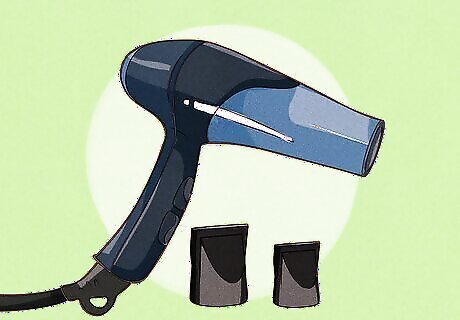
Routinely exposing your hair to excessive or harsh heat will damage your long locks. If possible, invest in salon quality tools.When purchasing a flat iron or curling iron, opt for a tool that lists its temperature in degrees instead of “High,” “Medium,” or “Low.” This feature will allow you to control the temperature. When buying a blow-dryer, search for a product with a heat distributing nozzle and or a diffuser attachment. These features spread the heat evenly throughout your hair. If you use a heat tool to style your hair, apply a heat protectant spray to your hair first so it doesn't get damaged, and don't use maximal temperatures.
Purchase a high-quality hairbrush.
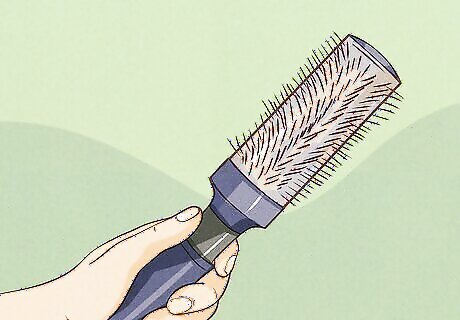
When you have long locks, a great hairbrush is a worthwhile investment. Select a brush with natural bristles—a boar bristle round brush is ideal. Your brush should be firm enough to detangle your hair, yet gentle enough so that it does not pull too hard on your hair.
Brush your hair before bed.
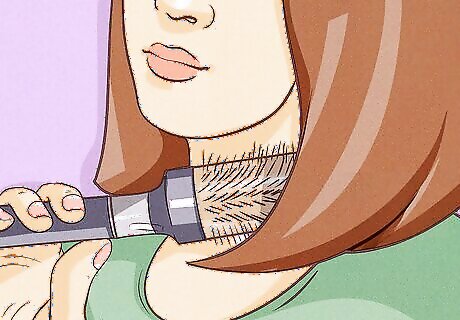
Your bedtime routine should include brushing your hair. First, detangle any knots in your hair starting at the ends and working up to the roots. Then, run through your locks with a wide-toothed comb or a boar bristle brush, going from the roots to the ends. This will detangle your locks and spread your scalp's natural oils throughout your hair.
Use scrunchies at night.
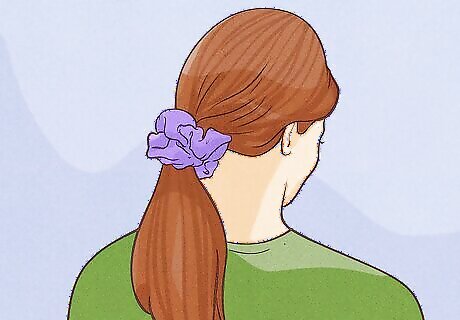
When worn at night, elastic bands can cause undue damage to your roots and hair shafts. If you prefer to wear your hair up at night, trade your elastic band for a scrunchie. Before bed, twist your hair into a top-knot and secure the high bun with a scrunchie.
Sleep on a silk pillowcase.
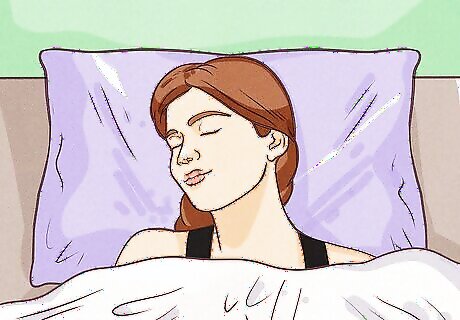
When your hair comes into contact with a cotton pillowcase, the resulting friction damages your long tresses. Upgrade to a silk pillowcase to prevent split ends. If you cannot afford a silk pillowcase, wrap your hair in a silk scarf.
Use a sleeping cap.
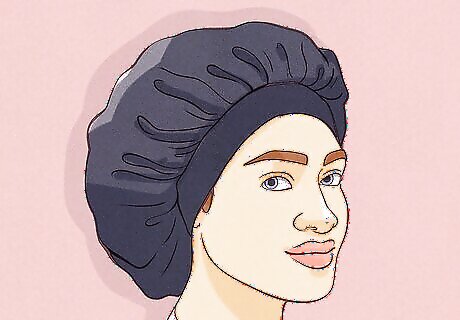
Waking up with tangled tresses is never fun. Protect your hair at night with a sleeping cap. Sleeping caps constrain your hair—when your hair moves less at night, you wake up with fewer snarls.
Maintain a healthy diet.

Your diet impacts the health of your hair. To maintain a healthy shine to your long mane, drink lots of water and eat a diet rich in vitamins A, B, C, D, E, and K. To increase your intake of vitamins A, C, E, and K, consume more mangos, kale, spinach, sweet potatoes, avocados, and apples. To increase your intake of vitamins B and D, eat more animal products. These include fish and dairy products. Supplements like biotin, folic acid and vitamin E can also assist with healthy hair growth.




















Comments
0 comment